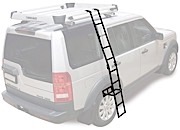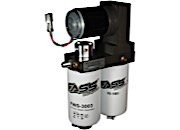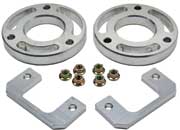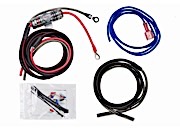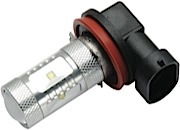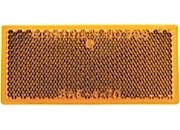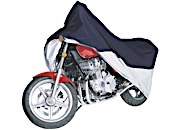Your Garage
Glossary
A B C D E F G H I J K L M N O P Q R S T U V W X Y Z
-A-
-
ABS (Anti-Lock Braking System)
Computer, sensors and solenoid valves which together monitor wheel speed and modulate braking force if wheel lockup is sensed during braking. Helps the driver retain control of the vehicle during heavy braking on slippery roads.
-
Aerodynamic Drag
Basically wind resistance, aerodynamic drag is expressed by a measurement called coefficient of drag (Cd). A lower number means an automobile cuts through wind more efficiently, resulting in better fuel economy and lower wind noise.
-
AFV (Alternative Fueled Vehicle)
Vehicle powered by a fuel other than gasoline or diesel.
-
Air Ride Suspension
Suspension which supports the load on air-filled rubber bags rather than steel springs. Compressed air is supplied by the same engine-driven air compressor and reservoir tanks which provide air to the air brake system.
-
Aspect Ratio
A function of tire size designation determined by dividing tire height by the nominal section width.
-
ATC (Automatic Traction Control)
Usually an optional feature based on ABS, it prevents spinning of the drive wheels under power on slippery surfaces by braking individual wheels and/or reducing engine throttle. Also called ASR, an acronym sometimes loosely translated from the German as anti-spin regulation.
-
ATV (All Terrain Vehicle)
Vehicle designed for any type of terrain.
-
Automatic Transmission Shift Lock
This safety device requires that the ignition is on and the brake pedal is depressed before the transmission lever can be moved out of "Park." The shift lock prevents a car from being put into "Drive" or "Reverse" and accelerating inadvertently.
-
Auxiliary Springs
Springs of a two-stage design. (Also called Helper Springs). Used to control the roll and sway of trucks with high bodies, liquid loads, or other loads that might shift. Also used with bodies that have a high center of gravity, to handle shifting weight when cornering or operating on high-crowned roads. The springs are mounted only to act after the regular springs are partially deflected. Usually located in the rear only.
-
AVI (Automatic Vehicle Identification)
System combining an on-board transponder with roadside receivers to automate identification of vehicles. Uses include electronic toll collection and stolen vehicle detection. (see IVHS)
-
AVL (Automated Vehicle Location)
Class of technologies designed to locate vehicles for fleet management purposes and for stolen vehicle recovery. Infrastructure can be land-based radio towers or satellites. (see IVHS)
-
Axle
Structural component to which wheels, brakes and suspension are attached.- Drive axles are those with powered wheels.
- Front axle is usually called the steer axle.
- Pusher axles are unpowered and go ahead of drive axles.
- Rear axles may be drive, tag or pusher types.
- Tag axles are unpowered and go behind drive axles.
-B-
-
BA (Bumper to Axle, Front)
Distance from front bumper to centerline of axle. Also known as front overhang. Used for front mounting applications.
-
Balance Shafts
Balance shafts are small, weighted shafts - similar to a camshaft - inside the engine block. Two balance shafts rotate in opposite directions from each other at twice the crankshaft speed to help "cancel out" engine vibration. Balance shafts are most common to 4-cylinder engines to help reduce noise, vibration and harshness (NVH) inherent in this engine design.
-
Ball Joint
A flexible joint consisting of a ball in a socket. It is used primarily in the front suspension because of its wide range of motion.
-
BBC (Bumper to Back of Cab)
Distance from a truck's front bumper to the back of its cab.
-
BHP (Brake Horsepower)
Engine horsepower rating as determined by brake dynamometer testing. (see Horsepower)
-
Bill of Lading
Itemized list of goods contained in a shipment.
-
Blind Spot
Areas around a commercial vehicle that are not visible to the driver either through the windshield, side windows or mirrors.
-
Bobtail
Tractor operating without a trailer. Also refers to straight truck.
-
Bogie (also spelled bogey)
Assembly of two or more axles, usually a pair in tandem.
-
Bore and Stroke
Two separate measurements often used together. Bore is the diameter of the individual cylinder in an engine. Stroke is the distance the piston travels from bottom dead center to top dead center within that cylinder.
-
Brake Booster
A vacuum-operated mechanical device that multiplies the manual force exerted when braking, thereby reducing the actual pedal pressure required to properly apply the brakes.
-
Brake Caliper
The disc brake component that straddles the rotor and houses the piston, cylinder and brake pads. The piston movement pushes the pad against the rotor to slow or stop the vehicle.
-
Bridge Formula
A bridge protection formula used by federal and state governments to regulate the amount of weight that can be put on each of a vehicle's axles, and how far apart the axles (or groups of axles) must be to legally carry a given weight.
-
Bunk
See Sleeper.
-C-
-
CA (Cab Axle)
Measured from back of cab to centerline of rear axle. Important when determining body size.
-
Camber Angle
The inward or outward angle which a front-wheel spindle makes with a vertical line, as viewed from either the front or the rear of the vehicle. Positive camber results when the top of a tire tilts out further than its bottom. The adjustment of this setting affects both tire wear and vehicle handling.
-
Cargo Weight
Combined weight of all loads, gear and supplies on a vehicle.
-
Cargo Weight Rating
The value specified by the manufacturer as the cargo-carrying capacity in kilograms, of a vehicle, exclusive of the mass of occupants in designated seating positions.
-
Cartage Company
Company that provides local (within a town, city or municipality) pick-up and delivery.
-
Cast Spoke Wheel
Wheel with five or six spokes originating from a center hub. The spoked portion, usually made of cast steel, is bolted to a multiple-piece steel rim (see Demountable Rim; Disc Wheel).
-
Caster Angle
The angle which a kingpin makes with a vertical line, as viewed from the side. A positive caster angle tends to keep wheels in a straight line. Proper caster adjustments improve both tire wear and fuel economy.
-
Catalytic Converter
This muffler-like canister mounted in the exhaust system uses platinum or palladium as a catalyst to chemically convert some harmful emissions in a vehicle's exhaust into water vapor and carbon dioxide.
-
CB (Citizens Band Radio)
Two-way radio for which no license is required by the Federal Communications Commission (FCC). Long beyond its heyday in the '70s, CB is still used by truckers and motorists for everything from traffic condition reports to emergency calls to idle chatter.
-
CDL (Commercial Driver's License)
License which authorizes an individual to operate commercial motor vehicles and buses over 26,000 pounds gross vehicle weight. For operators of freight-hauling trucks, the maximum size which may be driven without a CDL is Class 6 (maximum 26,000 pounds gross vehicle weight).
-
CE (CF, LP)
Distance from back of a truck's cab to the end of its frame.
-
Center of Gravity
The point at which all of a vehicle's weight, including payload, is considered to be concentrated. Used for determining weight distribution when designing a suspension system.
-
CFC
Chlorofluorocarbon. A vehicle air conditioning system that uses R-134a refrigerant instead of CFC-based chemicals (usually known as Freon).
-
CG (Center of Gravity)
Weight center or balance point of an object, such as a truck body. Calculated to help determine optimum placement of truck bodies on chassis.
-
Chassis
That part of the vehicle which consists of all functional parts, such as the frame, suspension, exhaust system, brakes, engine, transmission, rear axle, drive train, fuel system, wheels, and tires.
-
Chassis Cab
An incomplete vehicle with a completed occupant compartment that requires only the addition of the cargo-carrying components.
-
Chassis Cowl
The portion of the body bounded by the front fenders, the base of the windshield, and the rear edge of the hood found on a chassis.
-
Chassis Weight (Curb Weight, Tare Weight)
Weight of the empty truck, without occupants or load.
-
CNG
Compressed natural gas.
-
COC (Cab-Over-Camper)
A slide-in camper installed in a pickup bed, where the front of the camper extends over the pickup cab.
-
COE (Cab-Over-Engine)
Truck or tractor design in which the cab sits over the engine on the chassis.
-
COFC (Container On Flat Car)
Method of moving shipping containers which involves transporting them on railroad flat cars.
-
Common Carrier
Freight transportation company which serves the general public. May be regular route service (over designated highways on a regular basis) or irregular route (between various points on an unscheduled basis).
-
Compensated Intracorporate Hauling
Freight transportation service provided by one company for a sister company.
-
Compression Ratio
The volume of the combustion chamber and cylinder when the piston is at the bottom of its stroke, divided by the volume of the combustion chamber and cylinder when the piston is at the top of its stroke. Higher compression ratios tend to increase engine efficiency.
-
Container (Shipping Container)
Standard-sized rectangular box used to transport freight by ship, rail and highway. International shipping containers are 20 or 40 feet long, conform to International Standards Organization (ISO) standards and are designed to fit in ships' holds. Containers are transported on public roads atop a container chassis towed by a tractor. Domestic containers, up to 53 feet long and of lighter construction, are designed for rail and highway use only.
-
Container Chassis
Single-purpose semitrailer designed to carry a shipping container.
-
Contract Carrier
Company that transports freight under contract with one or a limited number of shippers.
-
Converter Dolly (Dolly)
Auxiliary axle assembly equipped with a fifth wheel (coupling device), towed by a semitrailer and supporting the front of, and towing, another semitrailer.
-
Crumple Zones
These exist at the front and rear of the vehicle to help absorb the impact of a collision. These pre-stressed areas in the fender, hood, frame and related body components are designed to deform in a predetermined manner during collision. Their purpose is to help lessen the force the impact transfers to the passenger compartment. In essence, the crumple zone of a vehicle is sacrificed to help protect the occupants.
-
Cube (Cubic Capacity)
Interior volume of a truck body, semitrailer or trailer, measured in cubic feet.
-
Curb Weight
See Chassis Weight.
-D-
-
Dead-Heading
Operating a truck without cargo.
-
Deflection Rate
Thedeflection rate of a spring is the weight of the load in pounds required to compressor deflect the spring a distance of one inch. Used to compare and test springs.
-
Demountable Rim
Multi-piece steel wheel rim assembly which is bolted to a spoke hub. Demountable rims are still in use, though they have been replaced in many applications by the simpler disc wheel. (see Cast Spoke Wheel)
-
Differential
Standard: The gear assembly connects to the drive shaft which permits the wheels to turn at different speeds when going around a corner, while transmitting power from the drive shaft to the wheel axles.
Locking: The same attributes of a standard differential, except that when one wheel is slipping, the most torque is supplied to the wheel with best traction. A locking differential reduces the possibility of a vehicle becoming immobile when one driving wheel loses traction.
-
Disc Brakes
A type of brake consisting of a flat rotor disc that turns with the wheel and a stationary component (caliper). Braking takes place by the caliper forcing the brake pads against both sides of the rotating disc. Generally, more fade-resistant than drum brakes as the rotor heats it expands against the closing pads.
-
Disc Wheel
Single-piece rim/wheel assembly of stamped and welded steel or forged aluminum, anchored by 8 or 10 nuts to a hub. A "Budd wheel" is a ten-hole, stud-piloted disc wheel; a design originated by the Budd Corporation.
-
Displacement (Piston Displacement)
Sum of the volumes swept by an engine's pistons as they travel up and down in their cylinders. Based upon bore (diameter of cylinder) and stroke (distance traveled by piston). Expressed in liters or cubic inches.
-
Dolly
See Converter Dolly.
-
Double Wishbone Suspension
This is an independent suspension system in which each wheel is located on a "knuckle" that is connected by ball joints to upper and lower A-arms that are unequal in length. This system minimizes changes in track and camber during cornering and when driving over bumps.
-
Doubles (Twins, Twin Trailers)
Combination of a tractor and two semitrailers connected in tandem by a converter dolly. (see Converter Dolly; Pintle Hook)
-
Drive
All-Wheel Drive: A vehicle with a powertrain that temporarily transfers power to all four driving wheels when sensed by the coupler.
Four-Wheel Drive: A vehicle with a powertrain that can transfer power to all four driving wheels upon driver demand. Also known as 4x4.
Front-Wheel Drive: A vehicle with a powertrain that can only transfer power to the front driving wheels.
Two-Wheel Drive: A vehicle with a powertrain that can only transfer power to the rear driving wheels.
-
Driveline
All the components which together transmit power from the transmission to the drive axle(s). These consist of at least one driveshaft (propeller shaft) with a universal joint at each end.
-
Drivetrain (Powertrain)
All the components, excluding engine, which transmit the engine's power to the rear wheels: clutch, transmission, driveline and drive axle(s). (See Powertrain)
-
DRL (Daytime Running Lights)
System that automatically turns on a vehicle's low beam headlights when the parking brake is released and the ignition is on.
-
Drum Brake
A hollow drum is attached to the wheel and rotates with it. When you push the brake pedal, two "shoes" press against the inside surface of the drum to slow and stop the wheel.
-E-
-
EBD (Electronic Brake-Force Distribution)
This system optimizes the braking effort distributed between front and rear axles. Vehicle stability during braking is improved in conditions that fall short of triggering the ABS. EBD helps minimize stopping distances regardless of load conditions.
-
EDI (Electronic Data Interchange)
The business-to-business interconnection of computers for the rapid exchange of a wide variety of documents, from bills of lading to build tickets at auto plants.
-
Escape Ramp
See Runaway Truck Ramp.
-
Exempt Carrier
Company which transports commodities exempted from Interstate Commerce Commission (ICC) economic regulation.
-
EV (Electric Vehicle)
Vehicle powered by electric motor(s) rather than by an internal combustion engine. Most common source of electricity is chemical storage batteries.
-F-
-
Federal Motor Vehicle Safety Standards
The National Highway Traffic Safety Administration (NHTSA) establishes minimum safety standards that apply to motor vehicles as well as specific vehicle components.
-
Fifth Wheel
Coupling device attached to a tractor or dolly which supports the front of a semitrailer and locks it to the tractor or dolly. The fifth wheel's center is designed to accept a trailer's kingpin, around which the trailer and tractor or dolly pivot in turns.
-
Final Drive Ratio
The number of turns the rear wheels make in relation to the number of turns the drive shaft make.
-
Fixed Tandem
Assembly of two axles and suspension that is attached to the chassis in one place, and cannot be moved fore and aft. (see Sliding Tandem)
-
For-Hire Carrier
Company in the business of transporting freight belonging to others (see Private Carrier).
-
Forward Control (Bare Chassis)
A vehicle with driver controls such as pedals, steering wheel, and instruments located as far forward as possible. The purpose is to allow for more cargo floor space than a conventional engine/cab design would provide.
-
Fuel Injection
A method of fuel management delivering fuel under pressure into an engine's intake manifold. Fuel injection systems can be single-point, multi-point, etc.
-
Fuel Injection, Electronic
A computer-controlled method of delivering fuel under pressure. The computer monitors signals from coolant temperatures, manifold vacuum, exhaust oxygen sensor, and engine cranking sensor. It "tells" the injectors to release and adjust the fuel to yield an air/fuel mixture assuring engine operation well matched with emission requirements, optimum fuel economy, and overall vehicle performance.
-G-
-
GAW (Gross Axle Weight)
GAW is the actual weight that the front or rear suspensions and axle systems are carrying.
-
GAWR (Gross Axle Weight Rating)
Maximum weight an axle is rated to carry by the manufacturer. Includes both the weight of the axle and the portion of a vehicle's weight carried by the axle.
-
GCW (Gross Combination Weight)
Total weight of a loaded combination vehicle, such as a tractor-semitrailer or truck and full trailer(s).
-
GCWR (Gross Combination Weight Rating)
GCWR is the maximum amount of weight allowable, as established by the manufacturer, for the truck, trailer, equipment, payload, fuel, and occupants. Exceeding this weight is not recommended.
-
Geared Speed
Calculated vehicle speed at the engine's governed rpm in each transmission gear, or (commonly) in top gear.
-
Gear Ratio
Number, usually expressed as a decimal fraction, representing how many turns of the input shaft cause exactly one revolution of the output shaft. Applies to transmissions, power takeoffs, power dividers and rear axles. Example: If 2.5 revolutions of an input shaft cause one revolution of the output shaft, the gear ratio is 2.5:1.
-
Grade
Steepness of a grade, expressed as a percentage. Example: A vehicle climbing a 5% grade rises 5 feet for every 100 feet of forward travel.
-
Grade Resistance
Gravity as it works against a truck that is climbing a grade.
-
Gradeability
Vehicle's ability to climb a grade at a given speed. Example: A truck with a gradeability of 5% at 60 mph can maintain 60 mph on a grade with a rise of 5%.
-
Ground Clearance
The distance between the ground and the lowest point of the vehicle excluding tires and wheels.
-
GVW (Gross Vehicle Weight)
Total weight of a vehicle and everything aboard, including its load.
-
GVWR (Gross Vehicle Weight Rating)
Total weight a vehicle is rated to carry by the manufacturer, including its own weight and the weight of its load.
-H-
-
Halogen Headlamps
Headlamps with special bulbs that provide brighter illumination than conventional bulbs yet last longer and use less energy. They get their name from the halogen gas inside the bulb.
-
Hazmat
Hazardous materials, as classified by the U.S. Environmental Protection Agency (EPA). Transport of hazardous materials is strictly regulated by the U.S. Department of Transportation.
-
Headache Rack
Heavy protective barrier mounted behind the tractor's cab. Designed to prevent "headaches" caused by load shifting forward from the trailer and crushing the cab.
-
HCFC
Hydrochlorofluorocarbon.
-
Horsepower (hp)
Measure of power (the amount of work that can be done over a given amount of time). One horsepower is defined as 33,000 foot-pounds of work in one minute. Example: Lifting 33,000 pounds one foot in one minute, or lifting 3300 pounds ten feet in one minute.
-
Horsepower, Gross Laboratory
Tested horsepower of a "bare" engine without fan, water pump, alternator, exhaust system or any other accessories.
-
Horsepower, SAE Net
Horsepower capability of an engine with full accessories and exhaust system. Test procedures per standards of Society of Automotive Engineers (SAE).
-
Hours-Of-Service
U.S. Department of Transportation safety regulations which govern the hours of service of commercial vehicle drivers engaged in interstate trucking operations.
-
Hydraulic Shift Pressure
Automatic transmissions operate by fluid pressures to engage and disengage the transmission's gears from the engine.
-I-
-
Independent Suspension
A term used to refer to any type of suspension system that allows each of the two wheels of a given axle to move up and down independently of each other.
-
Independent Trucker
See Owner Operator.
-
ITS (Intelligent Transportation Systems)
See IVHS.
-
IVHS (Intelligent Vehicle Highway Systems)
Blanket term for a wide array of technologies, including electronic sensors, computer hardware and software and radio communications. The purpose of IVHS is to increase efficiency of use of existing highways, reducing travel time, fuel consumption, air pollution and accidents. There are five functional areas:- 1. Advanced Public Transportation Systems (APTS)
- 2. Advance Traffic Management Systems (ATMS)
- 3. Advance Traveler Information Systems (ATIS)
- 4. Advanced Vehicle Control Systems (AVCS)
- 5. Commercial Vehicle Operations (CVO)
-J-
-
Jackknife
To place the trailer at a very sharp angle to the tractor.
-
Jake Brake
See Retarder.
-
JIT (Just-In-Time)
Manufacturing system which depends on frequent, small deliveries of parts and supplies to keep on-site inventory to a minimum.
-K-
-
Kingpin (axle)
Pin around which a steer axle's wheels pivot.
-
Kingpin (trailer)
Anchor pin at the center of a semitrailer's upper coupler which is captured by the locking jaws of a tractor's fifth wheel to attach the tractor to the semitrailer.
-L-
-
Landing Gear
Retracting legs which support the front of a semitrailer when it is not coupled to a tractor.
-
LCV (Long Combination Vehicle)
In general, vehicles longer than a standard doubles rig (tractor and two 28-foot semitrailers). Examples of LCVs which are permitted in some U.S. western states and eastern toll roads: Twin 48-foot trailers; triple 28-foot trailers.
-
Lessee
Company or individual which leases vehicles.
-
Lessor
Company which leases vehicles.
-
Lift Axle
Extra, unpowered axle needed only when the vehicle is loaded, allowing it to meet federal and state vehicle weight standards. The lift axle is mounted to an air spring suspension that raises the axle when it is not required.
-
LPG
Liquid propane gas.
-
Load Range (Tires)
Letter code system for the weight carrying capacity of tires. Comparable ply ratings are shown below.
-
Logbook
Book carried by truck drivers in which they record their hours of service and duty status for each 24-hour period. Required in interstate commercial trucking by the U.S. Department of Transportation.
-
Lowboy
Open flat-bed trailer with a deck height very low to the ground, used to haul construction equipment or bulky or heavy loads.
-
LSD (Limited Slip Differential)
Improves traction by splitting torque evenly and preventing one wheel from slipping or spinning. Especially helpful during cornering or other slippery situations (snow, gravel, etc.).
-
LSP & BV (Load-Sensing Proportioning and Bypass Valve)
Mounted to the frame and the rear suspension arm/rear axle, the LSP & BV senses the weight distribution of the vehicle and automatically varies the amount of hydraulic pressure to the rear brakes based on the load in the vehicle. This helps to reduce rear-wheel lock-up with either light or heavy loads to maintain stopping control.
-
LTL (Less-Than-Truckload)
A quantity of freight less than that required for the application of a truckload (TL) rate; usually less than 10,000 pounds. (see TL)
-
LTL Carrier
Trucking company which consolidates less-than-truckload cargo for multiple destinations on one vehicle. (see TL Carrier)
-M-
-
Multi-Valve Engine
By using more than the traditional one intake and one exhaust valve (two per cylinder), multiple valves (usually four per cylinder) increase the flow of the fuel/air mixture into the engine and exhaust gases out of the engine. It also allows a more central location of the spark plug for more uniform combustion.
-O-
-
On-Board Computer
See Trip Recorder.
-
Overdrive
Gearing in which less than one revolution of a transmission's input shaft causes one turn of the output shaft. The purpose of overdrive is to reduce engine rpm in high gear for better fuel economy. Example: A transmission with an overdrive top gear has a ratio of 0.70 to one. Turning the input shaft 0.7 revolutions causes 1.0 revolution of the output shaft.
-
Owner-Operator
Trucker who owns and operates his own truck(s).
-P-
-
P&D
Pickup and delivery.
-
Payload
Maximum allowable weight of cargo to be carried in a vehicle, including occupants (150 lbs. x seating capacity). Computed by subtracting curb weight from GVWR.
-
Peddle Run
Truck route with frequent delivery stops.
-
Pigtail
Cable used to transmit electrical power from the tractor to the trailer. So named because it is coiled like a pig's tail.
-
Piggyback
Semitrailer built with reinforcements to withstand transport by a railroad flatcar. (see TOFC)
-
Pintle Hook
Coupling device used in double trailer, triple trailer and truck-trailer combinations. It has a curved, fixed towing horn and an upper latch that opens to accept the drawbar eye of a trailer or dolly.
-
Piston Displacement
See Displacement.
-
Powertrain
A name applied to the group of components used to transmit engine power to the driving wheels. It can consist of engine, clutch, transmission, universal joints, drive shaft, differential gear, and axle shafts.
-
PR (Ply Rating)
A measure of the strength of tires based upon the strength of a single ply of designated construction. An eight-ply rating does not necessarily mean the tire has eight plies, but rather that the tire has the strength of eight standard plies.
-
Private Carrier
Business which operates trucks primarily for the purpose of transporting its own products and raw materials. The principle business activity of a private carrier is not transportation. (see For-Hire Carrier)
-
PSI (Pounds Per Square Inch)
In trucking, unit of measurement for tire air pressure, air brake system pressure and turbocharger boost.
-
PTO (Power Takeoff)
Device used to transmit engine power to auxiliary equipment. A PTO often drives a hydraulic pump, which can power a dump body, concrete mixer or refuse packer. Some designs mount to a standard opening on the transmission, while others attach at the front or rear of the engine.
-
Pull Trailer
Short, full trailer (supported by axles front and rear) with an extended tongue.
-
Pup Trailer
Short semitrailer, usually between 26 and 32 feet long, with a single axle.
-
Pusher Axle
See Axle.
-R-
-
Rack-and-Pinion Steering
Consists of a round pinion gear attached to the steering shaft, and a flat bar with gear teeth cut into it, called the rack. The rack and pinion mesh at a point between the front wheels. As the steering wheel is turned, the shaft from the steering column turns the pinion gear, forcing the rack either right or left along a horizontal plane. The rack is linked to the wheels via tie rods, which push and pull the wheels to steer them. In general, rack-and-pinion steering is precise and responsive.
-
Ramp Angle
The greatest angle at which a vehicle can approach or depart on a incline while allowing clearance of all chassis components.
-
RBM (Resisting Bending Moment)
A calculation used to compare frames of different section modulus and material. It is the product of the section modulus times the yield strength of the material.
-
Relay (Relay Driving)
Common practice in the less-than-truckload industry, in which one driver takes a truck for 8 to 10 hours, then turns the truck over to another driver, pony express style.
-
Reefer
Refrigerated trailer with insulated walls and a self-powered refrigeration unit. Most commonly used for transporting food.
-
Retarder
Device used to assist brakes in slowing the vehicle. The most common type of retarder on over-the-road trucks manipulates the engine's valves to create engine drag. (This type is commonly referred to as "Jake Brake" because the predominant manufacturer is Jacobs Vehicle Equipment Co.) Other types of retarders include exhaust retarders, transmission-mounted hydraulic retarders and axle-mounted electromagnetic retarders.
-
RFG (Reformulated Gasoline)
Gasoline blended with pollution reducing additives.
-
RoadRailer
Semitrailer specially designed to travel both on highway and on rails. Manufactured by Wabash Corp.
-
Rolling Radius
Tire-rolling radius is the distance from the center of the wheel to the road. Static radius applies when the vehicle is standing still. Dynamic rolling-radius describes wheels in motion. The latter is used to measure tire revolutions per mile and is usually slightly higher than static radius.
-
RPM (Revolutions Per Minute)
Measure of the speed at which a shaft spins. Most often used to describe engine crankshaft speed. Indicated by a tachometer.
-
Runaway Truck Ramp
Emergency area adjacent to a steep downgrade that a heavy truck can steer into after losing braking power. Usually two or three lanes wide and several hundred feet long, the ramp is a soft, gravel-filled pathway which absorbs the truck's forward momentum, bringing it to a safe stop. Depending on the surrounding terrain, the ramp may be level or run up or down hill.
-S-
-
Section Modulus
Section modulus is a measure of a frame's strength based solely upon the height, width, thickness, and configuration of the side rails. It is calculated at the point of maximum stress, which is usually directly behind the cab. It is not a measure of material strength and can only be used to compare frames of like materials.
-
Semitrailer
Truck trailer supported at the rear by its own wheels and at the front by a fifth wheel mounted to a tractor or dolly.
-
Setback Axle
Front steering axle moved rearward from the generally accepted standard position. Advantages: Shorter turning radius and more of a vehicle's weight shifted to front axle.
-
Shipping Weight
"Dry" weight of a truck including all standard equipment, but excluding fuel and coolant.
-
Single-Source Leasing
Service in which companies can lease drivers and trucks from the same source, rather than having to procure them from different companies.
-
Sleeper
Sleeping compartment mounted behind a truck cab, sometimes attached to the cab or even designed to be an integral part of it.
-
Sleeper Team
See Team.
-
Sliding Fifth Wheel
Fifth wheel mounted to a mechanism that allows it to be moved back and forth for the purpose of adjusting the distribution of weight on the tractor's axles. Also provides the capability to vary vehicle combination lengths.
-
Sliding Tandem (Slider)
Mechanism that allows a tandem axle suspension to be moved back and forth at the rear of a semitrailer, for the purpose of adjusting the distribution of weight between the axles and fifth wheel.
-
Speedability
Top speed a vehicle can attain as determined by engine power, engine governed speed, gross weight, driveline efficiency, air resistance, grade and load.
-
Spoke Wheel
See Cast Spoke Wheel.
-
Spread Axle (Spread Tandem)
Tandem axle assembly spaced further apart than the standard spacing of 54 inches. The U.S. federal bridge formula favors trailer axles with an eight or nine foot spread by allowing higher weight than on tandems with standard spacing.
-
Spring Capacity at Ground
The total weight (minus unsprung weight) which will deflect the spring at the maximum normal amount. Used for rating springs as installed on the vehicle.
-
Straight Truck
See Truck.
-
Suspension System
Includes springs, shock absorbers/struts, and linkage used to suspend the vehicle above the wheels.
-
SUV
Sport/utility vehicle.
-
Synchronized Transmission
Transmission with built-in mechanisms to automatically "equalize" the speed of its gears to allow smooth shifting without the need to double-clutch.
-T-
-
Tag Axle
See Axle.
-
Tare Weight
See Chassis Weight.
-
Tandem Axle (Tandems)
Pair of axles and associated suspension usually located close together. (see Spread Axle)
-
Team (Driver Team)
Team of two drivers who alternative driving and resting.
-
TEU (Twenty-Foot Equivalent Unit)
Standardized unit for measuring container capacity on ships, railcars, etc.
-
TL (Truckload)
The quantity of freight required to fill a trailer; usually more than 10,000 pounds. (see LTL)
-
TL Carrier
Trucking company which dedicates trailers to a single shipper's cargo, as opposed to an LTL (Less Than Truckload) carrier which transports the consolidated cargo of several shippers and makes multiple deliveries. (see LTL Carrier)
-
Toe-In
The amount by which the front of the front wheels are closer together than the back of the wheels.
-
TOFC (Trailer On Flatcar)
Method of moving cargo which involves transporting semitrailers on railroad flat cars. (see Piggyback)
-
Tongue Weight
Weight of the trailer tongue that rests on the tow vehicle on either the hitch ball or the pintle hook.
-
Torgue, Engine
Engine torque, measured in lb. ft., is the amount of twisting effort exerted at the crankshaft by an engine expressed in foot-pounds of force. A foot-pound represents the force of one pound acting at a right angle to the rotating crankshaft at distance of one foot in length.
Gross: The maximum torque developed by an engine without allowing for the power absorbed by the engine accessory units, such as the fan, water pump, generator, etc. Gross torque is used to determine gross horsepower.
Net: The actual torque available at the flywheel of the engine with engine accessories operating such as fan, water pump, generator, etc.
-
Tractor
Truck designed primarily to pull a semitrailer by means of a fifth wheel mounted over the rear axle(s). Sometimes called a truck tractor or highway tractor to differentiate from it from a farm tractor.
-
Tractor Trailer
Tractor and semitrailer combination.
-
Trailing Arm
A suspension component consisting of a longitudinal member that pivots from the body at its forward end and has a wheel hub attached at the other end (the trailing end). It is similar to a semi-trailing arm system except that its pivot axis is directly perpendicular to the vehicle's longitudinal axis.
-
Transmission
An assortment of gears that transfer engine power to the driving wheels through different gear ratios.
Automatic: One that shifts gears by hydraulic pressure through the automatic transmission fluid or electronically. No driver assistance is required.
Manual: One where the driver must repeatedly select the appropriate gear ratio. Both types are further classified by the amount of different available gear ratios, i.e.; 4-speed, 5-speed with overdrive, or 4-speed automatic with overdrive.
-
Tread/Track
The distance between the centers of the tires where they contact the road surface. Duals are measured from the center of dual wheels.
-
Tri-Axle
Truck, tractor or trailer with three axles grouped together at the rear. (see Tridem)
-
Tridem
Group of three axles on a truck, tractor or trailer. Tridems are most common on European semitrailers.
-
Trip Leasing
Leasing a company's vehicle to another transportation provider for a single trip.
-
Trip Recorder (On-Board Computer)
Cab-mounted device which electronically or mechanically records data such as truck speed, engine rpm, idle time and other information useful to trucking management.
-
Truck
Vehicle which carries cargo in a body mounted to its chassis, rather than on a trailer towed by the vehicle.
-
Turning Circle (Diameter)
Typically measured curb-to-curb, this is the tightest possible circle driven by the outside front tire between two imaginary curbs.
-
Twins (Twin Trailers)
See Doubles.
-U-
-
ULEV
Ultra-low emissions vehicle.
-
Upper Coupler
Load bearing surface on the underside of the front of a semitrailer. It rests on the fifth wheel of a tractor or dolly and has a downward-protruding kingpin which is captured by the locking jaws of the fifth wheel.
-V-
-
VIN (Vehicle Identification Number)
Assigned by the manufacturer, this number is unique to each vehicle and appears on the vehicle's registration and title.
-
VMRS (Vehicle Maintenance Reporting Standards)
Set of codes developed to facilitate computerized tracking of parts and labor used in equipment repair. Established and maintained by the American Trucking Associations.
-W-
-
Walking Beam Suspension
Type of truck and tractor rear suspension consisting of two beams, one at each side of the chassis, which pivot in the center and connect at the front to one axle of a tandem and at the rear to the other axle.
-
Weight Distribution
That portion of the total weight of a vehicle, including equipment and payload, that will be supported by each axle and tire. Proper distribution of total vehicle weight is critical to the service life of components such as the frame, axles, springs, bearings, and tires and therefore one of the most important requirements in selecting the right truck for your customer's particular job.
-
Weight, Sprung
The weight of components that are supported by a spring. Could include frame, engine, body, payload, etc. One figure needed to compute spring capacity at ground. (see Spring Capacity)
-
Weight, Unsprung
The weight of components that are not supported by springs. Could include tires, wheels, axles, etc. One figure needed to compute capacity at ground. (see Spring Capacity)
-
WIM (Weigh-In-Motion)
Technology for determining a vehicle's weight without requiring it to come to a complete stop.
-Y-
-
Yard Jockey
Person who operates a yard tractor.
-
Yard Tractor (Yard Mule)
Special tractor used to move trailers around a terminal, warehouse, distribution center, etc.
-
Yield Strength
The maximum load to which a frame may be subjected to deflect and return to its original shape upon removal of the load, without damage.



















